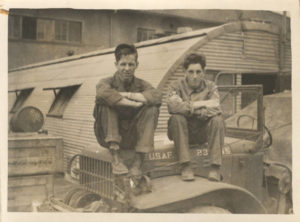calsfoundation@cals.org
Preserving Arkansas Veterans’ History

On November 11, 1918, an armistice was signed ending the fighting between the Allied nations and Germany during World War I. Known at the time as the “Great War,” the conflict had consumed the world for four long years and brought unprecedented death and destruction. The following year, President Woodrow Wilson commemorated the first anniversary of Armistice Day with the following words:
“To us in America the reflections of Armistice Day will be filled with solemn pride in the heroism of those who died in the country’s service, and with gratitude for the victory, both because of the thing from which it has freed us and because of the opportunity it has given America to show her sympathy with peace and justice in the councils of nations.”

In 1926, the U.S. Congress passed a resolution that called upon the president to issue annual proclamations observing Armistice Day and encouraging the American public to hold appropriate ceremonies. Congress made Armistice Day a legal holiday in 1938. Following World War II, efforts were made to change the holiday to honor all veterans, not just those who served in World War I. In 1954, Congress amended its original resolution and changed the name of the holiday to “Veterans Day.”
Over the years the CALS Butler Center for Arkansas Studies at the Roberts Library has initiated a number of projects (collected here along with other digital projects) to commemorate the service of Arkansas’s veterans.
The Arkansas Korean War Project was launched in 2008 to document and preserve information about Arkansas’s Korean War veterans. Since that time, we have gathered fifty-five oral histories as well as thousands of photographs and documents from Arkansans who served in what is often called “the Forgotten War.”

In 2014, during the 100th anniversary of World War I, we unveiled the Arkansas and the Great War website highlighting our vast holdings from that conflict. Nearly 800 letters and photographs were digitized and placed online to provide greater access to these important historical records.
We later launched the Arkansas Vietnam War Project, patterned after our Korean War Project, to collect the experiences of Arkansans who participated in probably the most controversial war in our nation’s history. Thus far we have interviewed fifty-six Arkansans who shared their memories, thoughts, and feelings about the war. These veterans have also shared thousands of photographs, documents, and AV materials related to their experiences.
The CALS Butler Center believes it is important to honor our veterans’ service, and we hope that these projects not only preserve the historical record of our veterans, but that they also provide greater insight into our shared humanity.
By Brian Robertson, manager of the Research Services Division at the CALS Butler Center for Arkansas Studies at the Bobby L. Roberts Library of Arkansas History & Art




